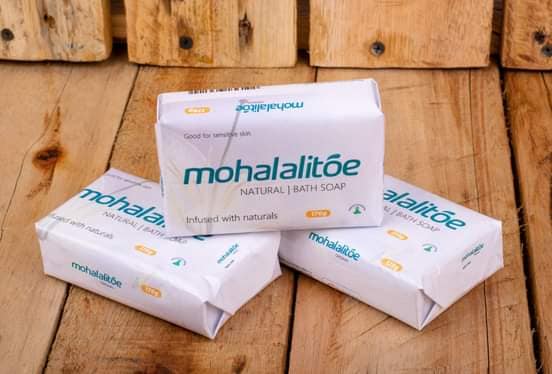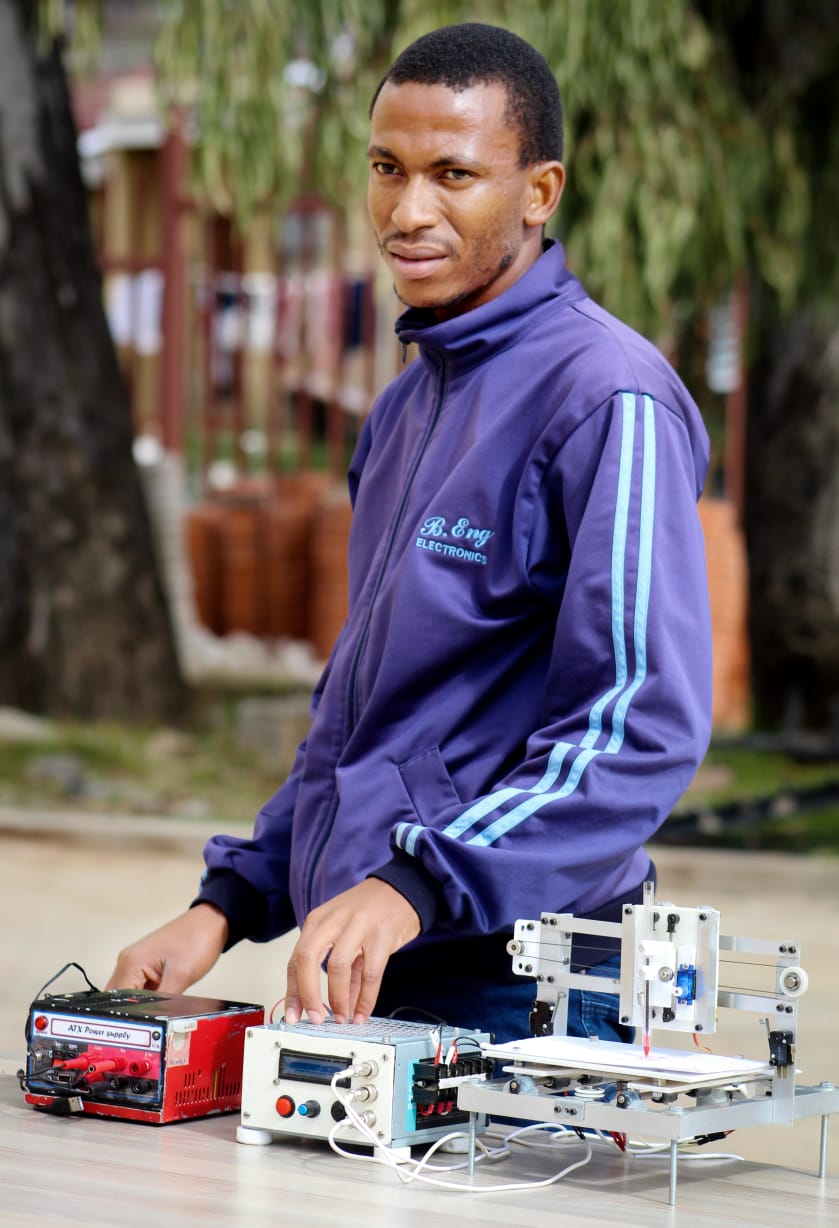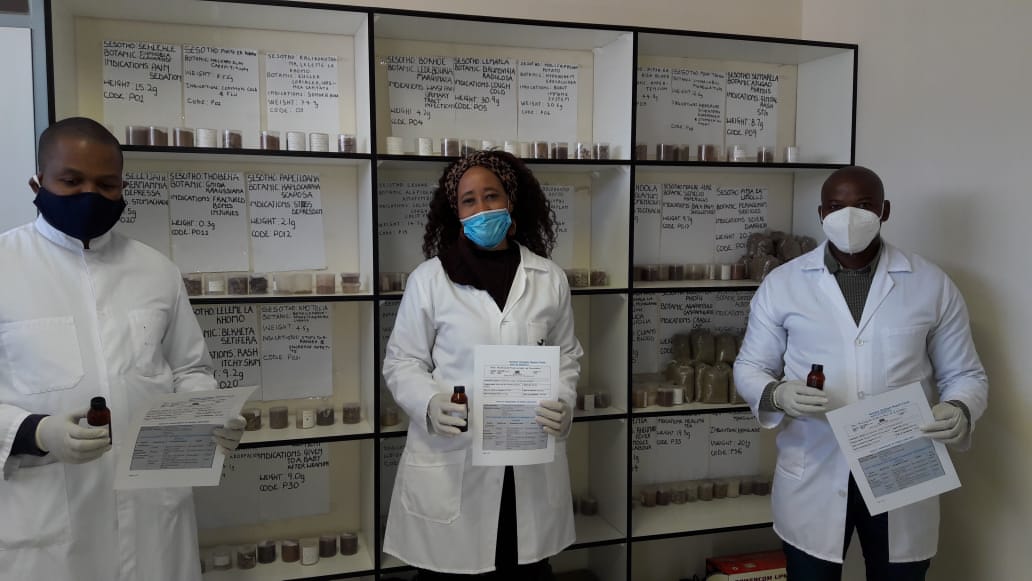This app combines Hi-Tech and Low-Tech. At high Hi-Tech, it tells you if someone who has COVID-19 came close to you in the past 14 days so you can immediately test. At Low-Tech, it alerts health workers in all ten districts of Lesotho WHO and WHERE someone in their district who came in contact with a person with COVID-19 might be. It also identifies areas (hot-spots) where most people who have or might have COVID-19 are. [THIS IS THE SECOND OF THE TWO APPS BY THE NATIONAL UNIVERSITY OF LESOTHO (NUL) INNOVATION HUB STUDENTS. CHECK THE FIRST APP BELOW ON THIS PLATFORM].In this story, you will see how the Hi-Tech and Low-Tech parts of the app cooperate “with each other” to do what neither of them could do. That is, each part works best where the other part is weak. The Low-Tech version specifically takes into account the fact that in reality, many people still don’t have smartphones. The app is being developed by the fearsome threesome: Boitumelo Ntilane, Lereko Maluke and Thabo Khabele, the NUL students who chose to work under the NUL Innovation Hub COVID-19 program. [Catch them here: +266 56725358, +266 +26659966490 ]. But why, on earth, do we need this Contact Tracing app?When we know (to the best of our ability) WHO has (or might have) the virus and WHERE they are, we may reduce the spread of the desease. We may also avoid shutting down everything. But when we don’t know the movements of our enemy, we hide indoors only to face, in there, another enemy called hunger. We are between the rock and hard place. So let’s start at the Low-Tech part of the app. Only health workers can log into the Low-Tech version. That is because only them are allowed to know the names of people who have or might have COVID-19. When health workers come in contact with someone who tests positive for COVID-19, these FOOT SOLDIERS are already on their toes. But not before they ask COVID-19 positive person for the following details. They will need to know the names, phone numbers, villages and districts of people the sick person knows FOR SURE he came in contact with, if he knows them at all. The COVID-19 positive person will also disclose, as far as his memory can go, which villages in which districts, he might have visited in the past 14 days. All this information is entered into the apps on the smart-phones of the health foot-soldiers. Once the information is entered, something interesting happens. If the COVID-19 positive person who lives in Ha Leqele, Maseru, reports that he interacted with someone who lives in Liphokoaneng, Berea in the past 14 days, the health foot soldiers in Berea are immediately alerted on their apps, that someone in their area is a suspect. Only health workers in Berea will see this update. Those in Mafeteng will only get information about Mafeteng suspects. The foot-soldiers will immediately search for the whereabouts of the suspect. When he is found, he is tested. If he tests positive, he gives information of his contacts as well and the whole thing repeats itself. On a Hi-Tech version, the general public is now involved. You download the app on Google Play or something. Suppose you tests positive after downloading. Either you or health officials update your status on the app. In this way, all people who installed this app and whose cell-phones came within 1 metre of yours in the past 14 days will be alerted by their own apps that they met you.This happens because the app takes control of your cell-phone’s Bluetooth once installed and the Bluetooths in interacting phones record their encounters (Nota Bene: Google is rapidly assisting with an API for this functionality—making the job easier for you, the mighty coders). Don’t worry about privacy, only the apps know each other, not you. Now, let’s suppose you are the one told by your app that you might have met and contracted coronavirus from a person with COVID-19 in the last 14 days. Then you go for testing and you are confirmed to be COVID-19 positive. First you, too, use the Hi-Tech version of the app to alert YOUR own contacts that they, too, might have COVID-19. But what about those you know you might have met but they had no smartphones? The health foot-soldiers now enter their information on their low-tech version of the app and trace them manually, repeating the process detailed earlier. Central to this app is the ability to identify places which might be the worst affected and which may be given special attention by health workers either for testing or for quarantining or both. Every time a village name in a certain district is entered into the system, a central system automatically counts how many times it is being mentioned. This is true whether the names are being entered in association with those testing positive for COVID-19 or with those suspected to be having the disease.In this way, the app developers will be able to work with GIS systems to visually map, as it happens, the areas with or likely to be the hot-spots of COVID-19, all across the country. An area with the biggest circle has the most mentions, and gets the most attention.
- July 20, 2020
CORONAVIRUS APP (No: 2) BY NUL INNOVATION HUB STUDENTS
Share
Share on facebook
Share on twitter
Share on linkedin
Click to View Photo Gallery
109937109_3106325479456373_2620756100455006632_n
109875264_3106326116122976_2976755487591871703_o
110136356_3106325856123002_8410017966701809098_o
110149555_3106325609456360_5960395685863388958_o
110180949_3110159379072983_7927926214785151200_n
95730080_2914943005261289_2934592334056128512_o
95935141_2914889711933285_7931767979585306624_o


